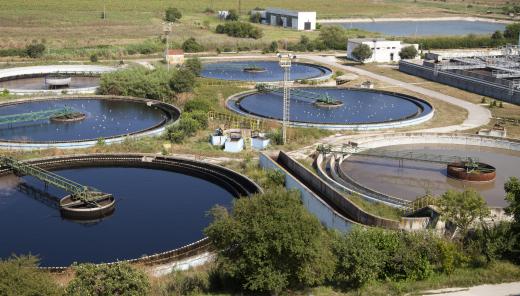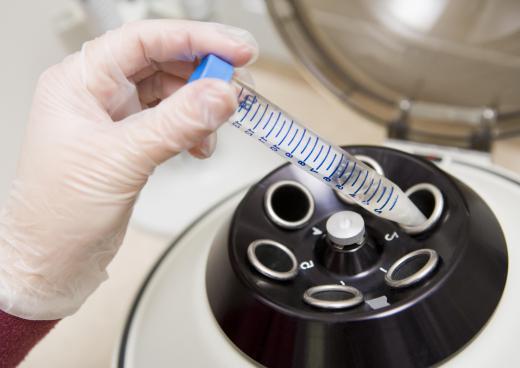Flocculation refers to the separation of a solution and most commonly, this word is used to describe the removal of a sediment from a fluid. In addition to occurring naturally, it can also be forced through agitation or the addition of flocculating agents. Many manufacturing industries use it as part of their processing techniques, and it is also extensively employed in water treatment. The technique is also widely used in the medical world to analyze various fluids.
The term is derived from floc, another word for flakes of material. When a solution is flocculated, the sediment is formed into clumps of aggregate that are easier to see. When this is initiated intentionally, the floc is usually removed with filters or screens. When a solution was separated by accident, attempts may be made to turn it back into a solution so that it will be usable again.

The technique can be used to separate out visible sediments and materials, and to treat colloids. A colloid is a solution that looks uniform, but actually consists of one or more components blended together. Some common examples of solutions with visible sediment are swimming pools and wastewater, both of which are flocculated for purity. Frequently encountered colloids include seafoam, milk, glues, and inks. The separate elements within the colloid are thoroughly blended to create a new compound, and they can be separated again.

Depending on the circumstances, flocculation may be desired or undesired. It is often deliberately achieved in the treatment of wastewater, removing harmful substances so that they can be treated separately. Other examples of deliberate processing include grease traps in commercial kitchens, centrifuges for processing blood, and facilities for extracting salt from seawater. A classic case of undesired flocculation is soured milk, in which the milk colloid separates, forming a layer of flakes of material on the top. If this separation is not desired in a manufacturing environment, steps are taken to minimize it.

There are a number of ways to separate a solution. Agitation is a common technique, since it can encourage flakes of sediment to clump together and gather on the bottom or the top, depending on their weight. Flocculant chemicals are also used to encourage clumping in a solution. Typically, they have a different electrical charge than the substances being precipitated out of the solution, attracting the material in clumps of particles.
Ever since she began contributing to the site several years ago, Mary has embraced the exciting challenge of being a About Mechanics researcher and writer. Mary has a liberal arts degree from Goddard College and spends her free time reading, cooking, and exploring the great outdoors.

